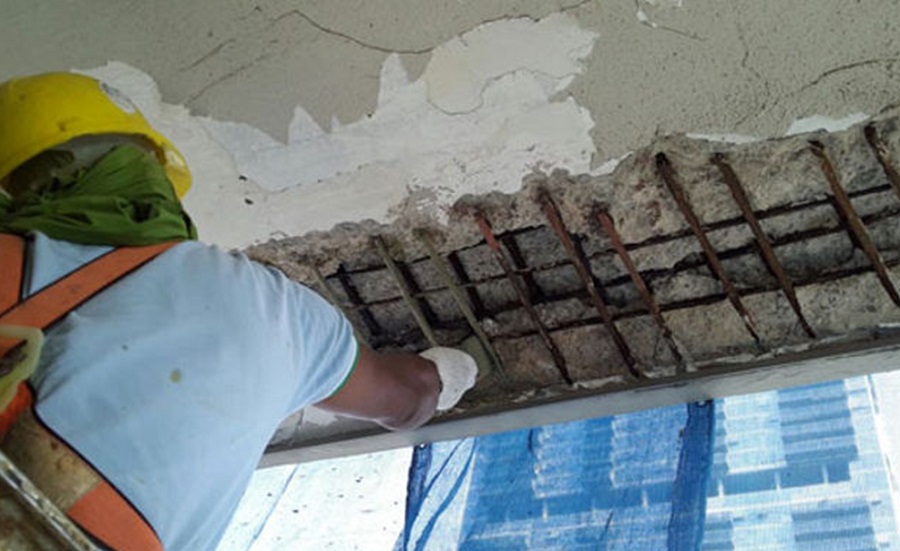Some issues for property owners are as inevitable as they are urgent, and spalling concrete ceiling repair is no exception. If you own a residential or commercial property, you may have noticed signs of falling and breakdown from below. Spalling is a common problem that occurs when the surface of the concrete begins to peel, flake, or break off.
Generally, spalling results in an unsightly and potentially dangerous ceiling. But it’s not just about papering over the cracks to deal with just the aesthetic side of things. If left unaddressed, spalling can cause further damage and even compromise the structural integrity of the building.
Addressing The Issue
It’s worth discussing the common causes of spalling and how professionals and property owners can work together in combating it. Suffice it to say that this isn’t an issue to take lightly, and any decision made should have long-term effects.
Common Causes Of Breakdowns
There are several factors that can contribute to spalling concrete ceilings. These may include weather conditions, chemical exposure, and the quality of the original concrete mixture.
Freeze-thaw cycles, exposure to de-icing salts, and acidic substances can all weaken the surface of the concrete. Poor concrete mix design, over-troweling, and improper curing can also result in weak concrete, which can contribute to the decline.
Comparing Repair Techniques
There are several methods for repairing spalling concrete ceilings, including patching, resurfacing, and recoating. The suitability of each step of the procedure depends on the extent of the damage and its long-term efficacy.
Patching involves filling in the damaged area with a fresh layer of concrete. Meanwhile, resurfacing involves applying a thin layer of concrete over the entire surface. Recoating involves applying a layer of protective coating over the surface of the concrete.
While patching is the most common repair method, it may not always be the best option. Resurfacing and recoating can provide a longer-lasting solution, but they are more expensive and time-consuming. The choice of repair method will also depend on the budget and the desired outcome.
The Costs Of Not Preparing The Area
One of the most important steps in spalling concrete ceiling repair is preparing the area properly. Failure to do so can result in a subpar repair job and may even cause further damage to the ceiling.
The area must be cleaned thoroughly, and all loose or damaged concrete must be removed before any repairs can occur. Ignoring this step can lead to further spalling and potentially even the collapse of the ceiling.
Identifying The Root Cause
To prevent future spalling, it is important to identify the key cause of the problem. Generally, spalling is a result of external factors, human error, or a combination of the two. Identifying the key cause can help prevent further damage and ensure that future repairs are effective.
Preventative Ceiling Maintenance
Regular maintenance can help prevent spalling concrete ceilings from occurring in the first place. This includes keeping the ceiling clean and dry, avoiding harsh chemicals or abrasive cleaners, and sealing the surface. Regular inspections can also help identify early signs of spalling, allowing for prompt repair before the damage becomes extensive.
Why DIYing Isn’t The Best Course
While DIY repairs can be tempting, spalling concrete ceiling repair is best left to the professionals. For a start, DIY repairs be dangerous for inexperienced users taking it head on.
Plus, they can also result in subpar repairs that may need to be redone in the future. Professional repair services have the tools and expertise needed to properly identify and repair the problem without significantly worsening it.
Conclusion
Spalling concrete ceiling repair becomes a crucial task for any property owner following inevitable water damage or other issues. By understanding the common causes of spalling and how to tackle them properly, property owners can ensure long-lasting, effective solutions.

